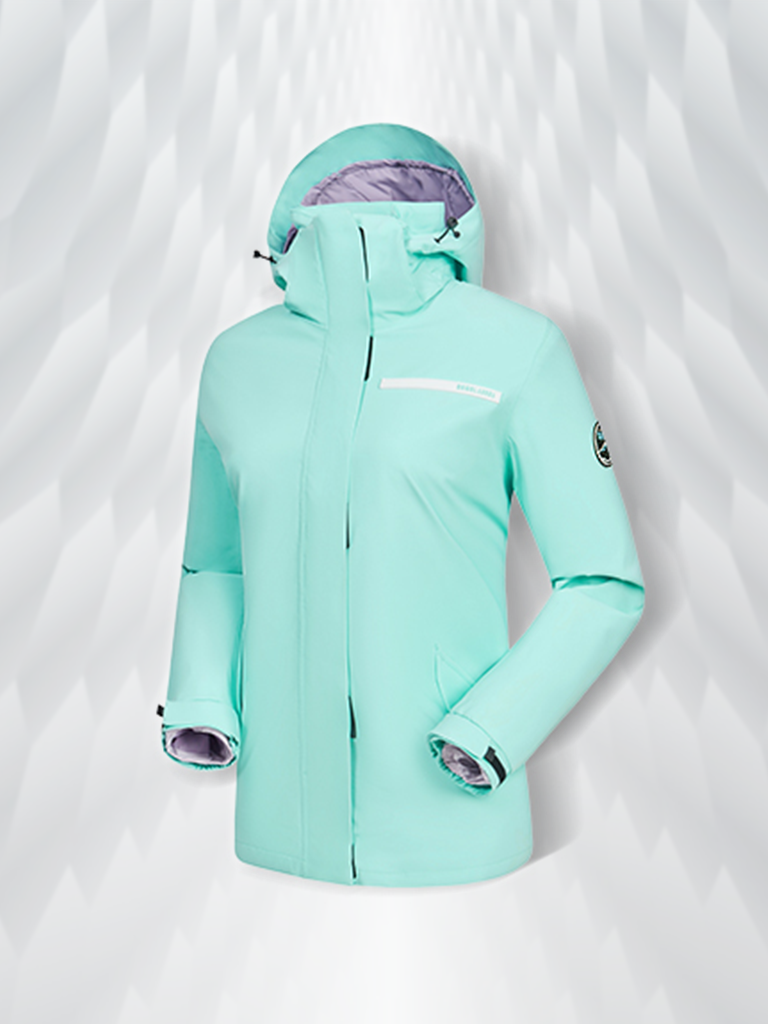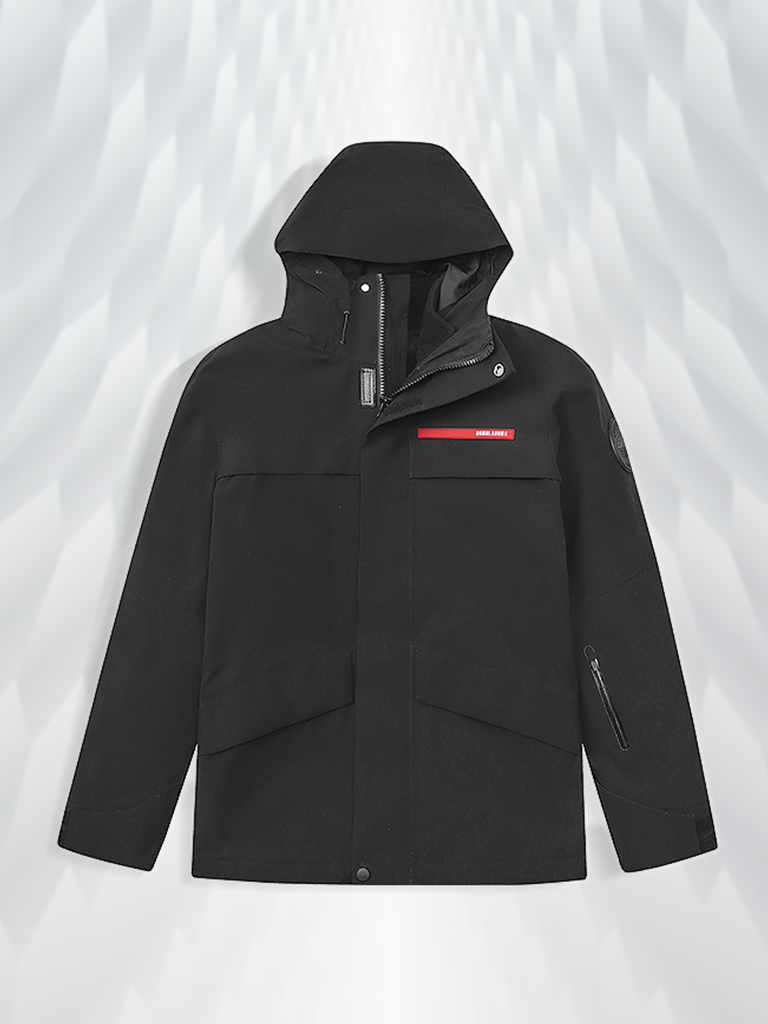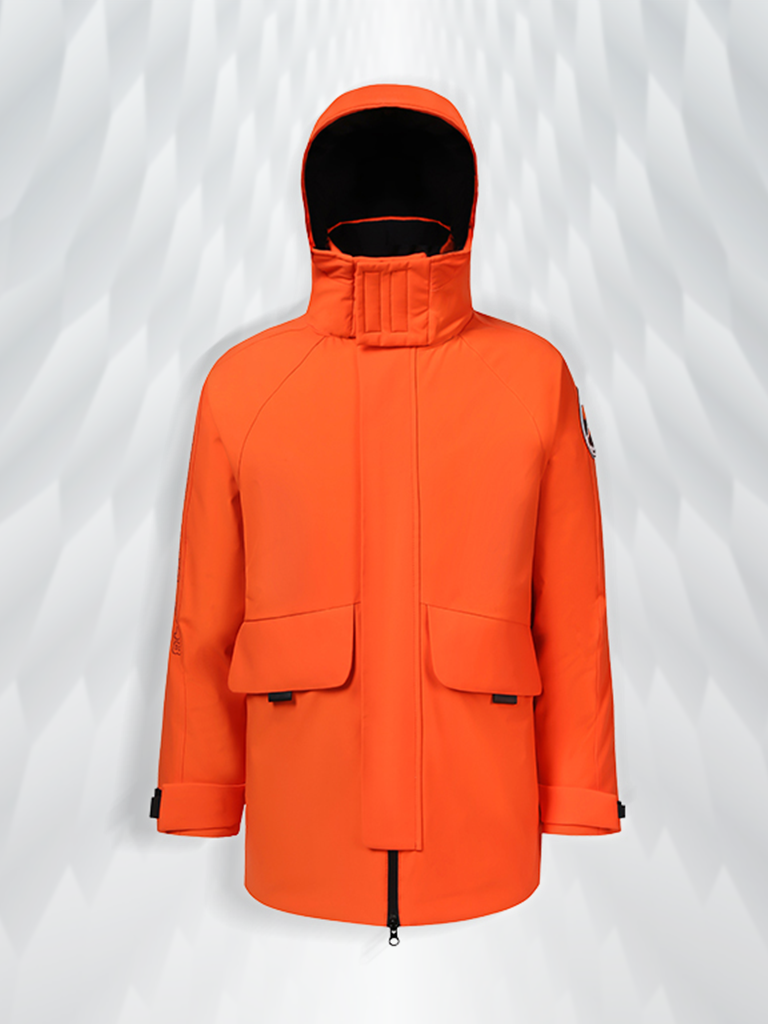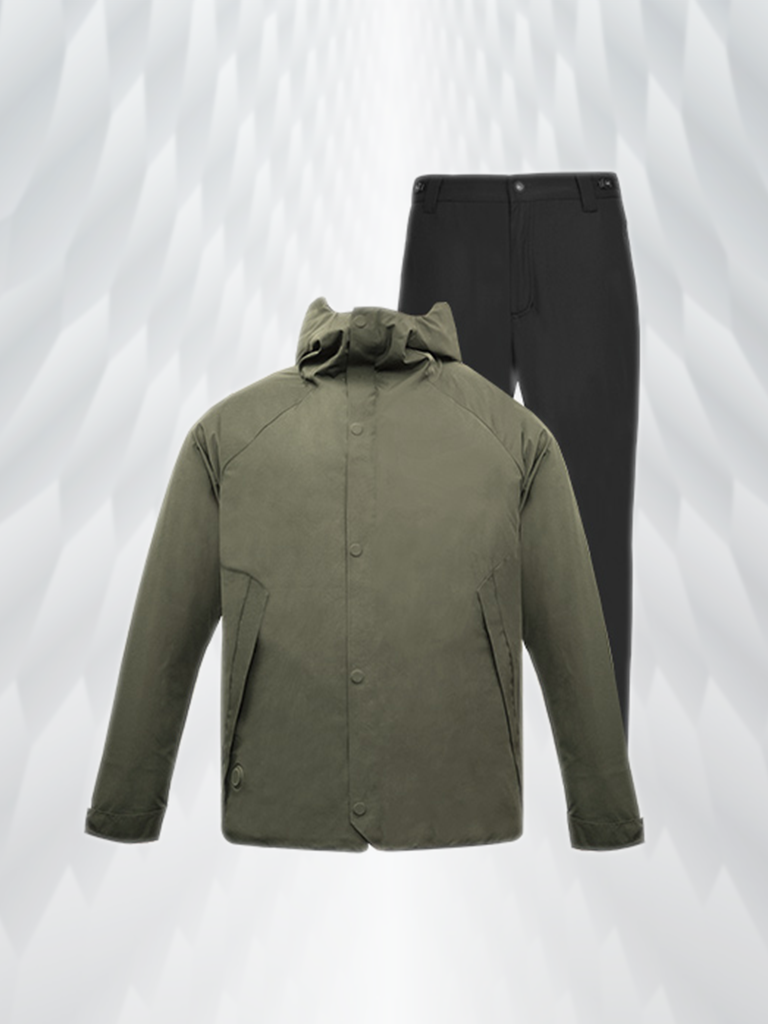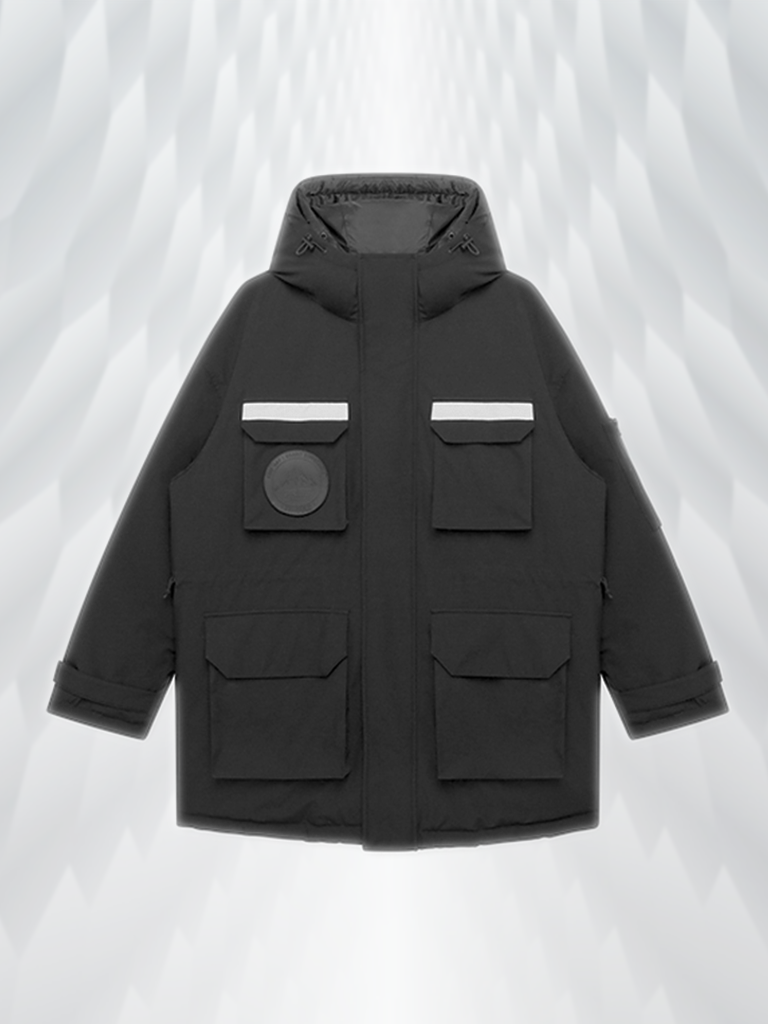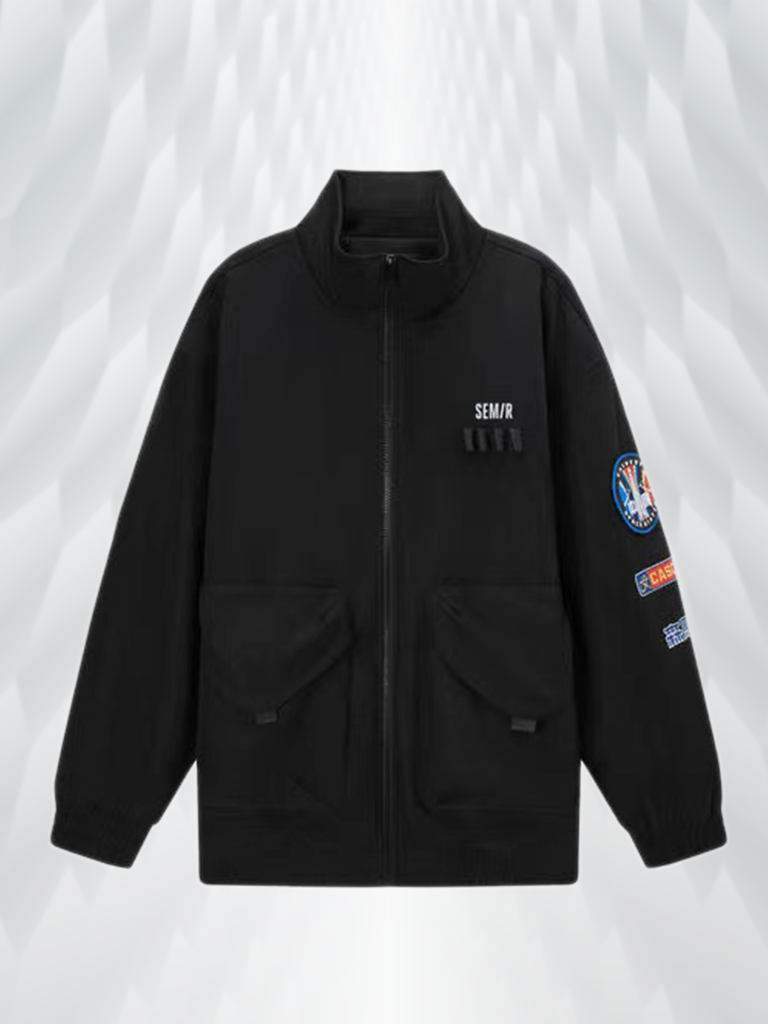Cold isolation, Warm-keeping

Lock out the cold, Stay warmer
Effective thermal insulation material makes winter clothing less chubby.
Extremely low thermal conductivity, excellent moisture permeability offers an extraordinary experience.
Y-Warm is available in market since Winter 2021 and highly recognized by consumers.

The principle of thermal insulation
Y-Warm is a layer of filler which can isolate heat and cold.
Y-Warm applied in clothing is like a insulation layer.
Outside of the insulation layer, the thermal exchange from cold air to body is dramatically reduced;
Inside of the insulation layer, the thermal exchange from body to cold air is as well dramatically reduced.
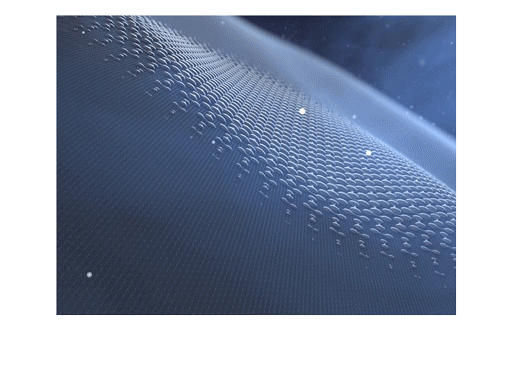
Target of function
According to clothes warm-keeping principle,
Isolate cold firstly, then keep warm.
More scientific,and more effective.
Y-Warm can isolate the body from coldness by combining with fluffy material (such as down, fiber flake, fleece fabric etc);
or combining with loose close-fitting clothing (such as sweater, fleece long sleeve, down west etc).

Demonstration of cold isolation
Room temperature is 20 °C, heating plate temperature is 125 °C, two layers of Y-Warm is used
After 10 minutes, 70% ice is still left.
Excellent thermal insulation brings extremely effective cold isolation.

Moisture Permeability
With general test method for comfort textile, the water vapor transmission rate is 4000-5000g/㎡·24h.
Special function
Hydrophilic group in Y-Warm can quickly absorb water vapor volatilized by human body;
High evaporation rate of allows fast sweat exportation.
According to feedback from consumer, actual comfortability is better than expectation.

Filling patterns
It is suggested that Y-Warm should be laid between apparel fabric and lining. If fluffy material is combined, Y-Warm should be placed in between apparel fabric and fluffy material.
Filling sequence:
1、Apparel: fabric + Y-Warm + Lining
2、Apparel: fabric + 1 layer of Y-Warm + fluffy material + Lining
3、Apparel: fabric + 2 layers of Y-Warm + fluffy material + Lining
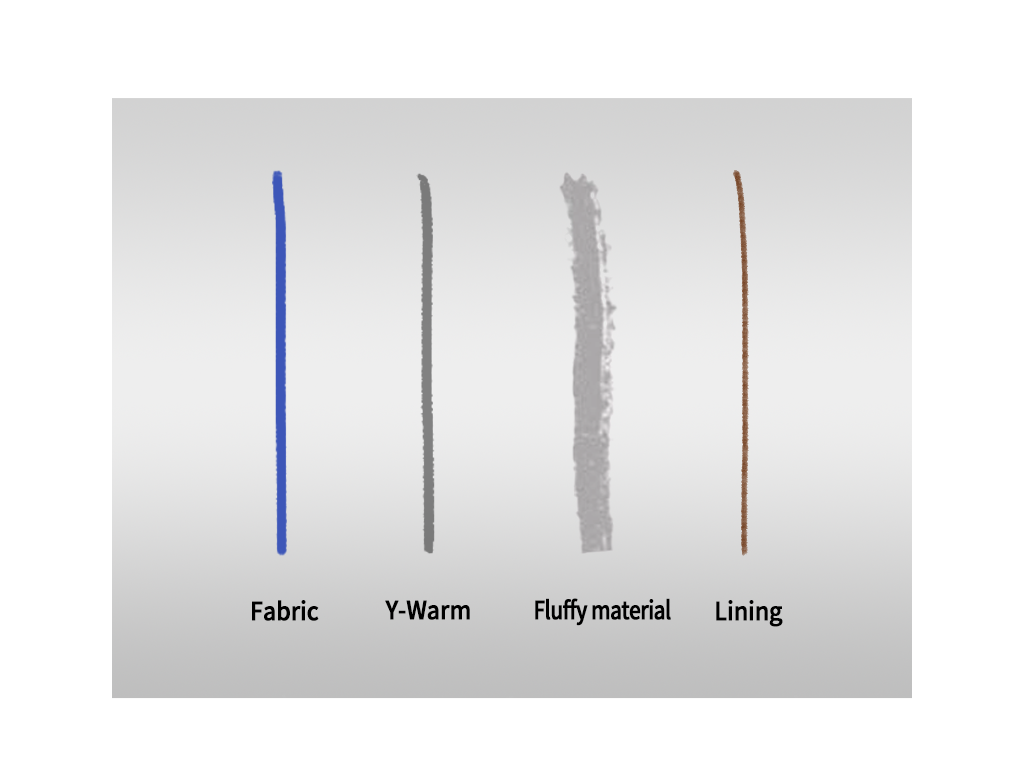
Filling only with Y-Warm
Y-Warm material and the lining should be sewn on four sides, hung and spliced on the back of the lining, and then filled between the apparel fabric and the lining (as shown in picture).
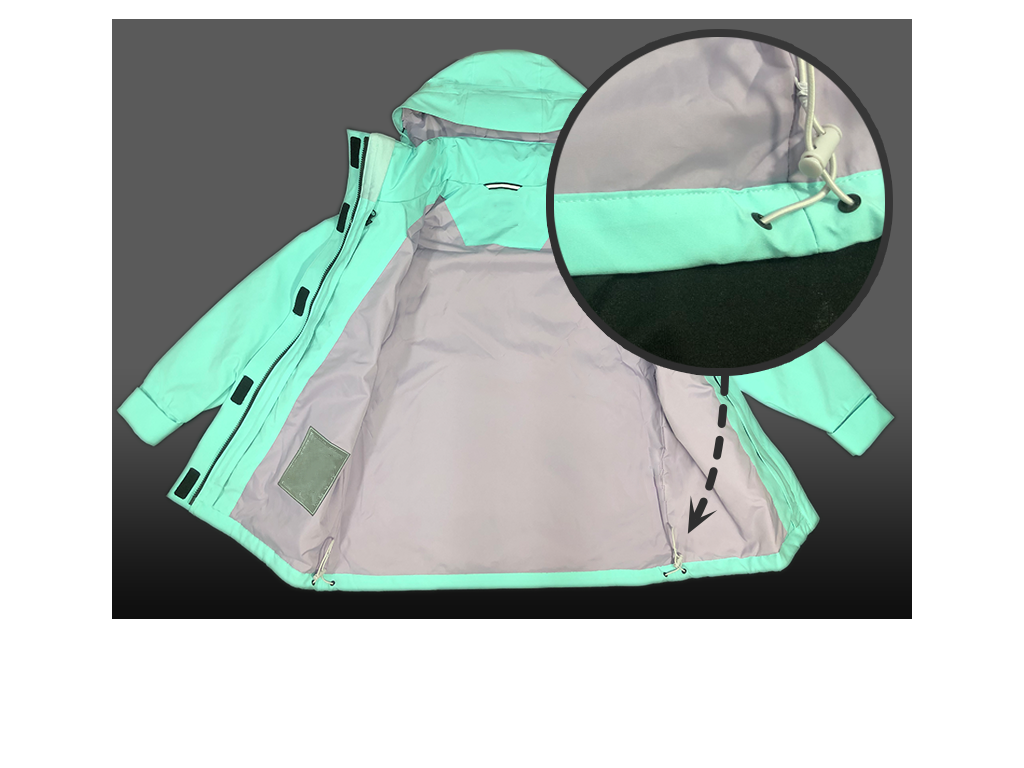
Filling Y-Warm + fluffy material
1、Quilting fluffy material and lining;
2、Sewing Y-Warm on four sides of fluffy material;
3、splicing.
Y-Warm should be sewn next to apparel fabric (as shown in picture)
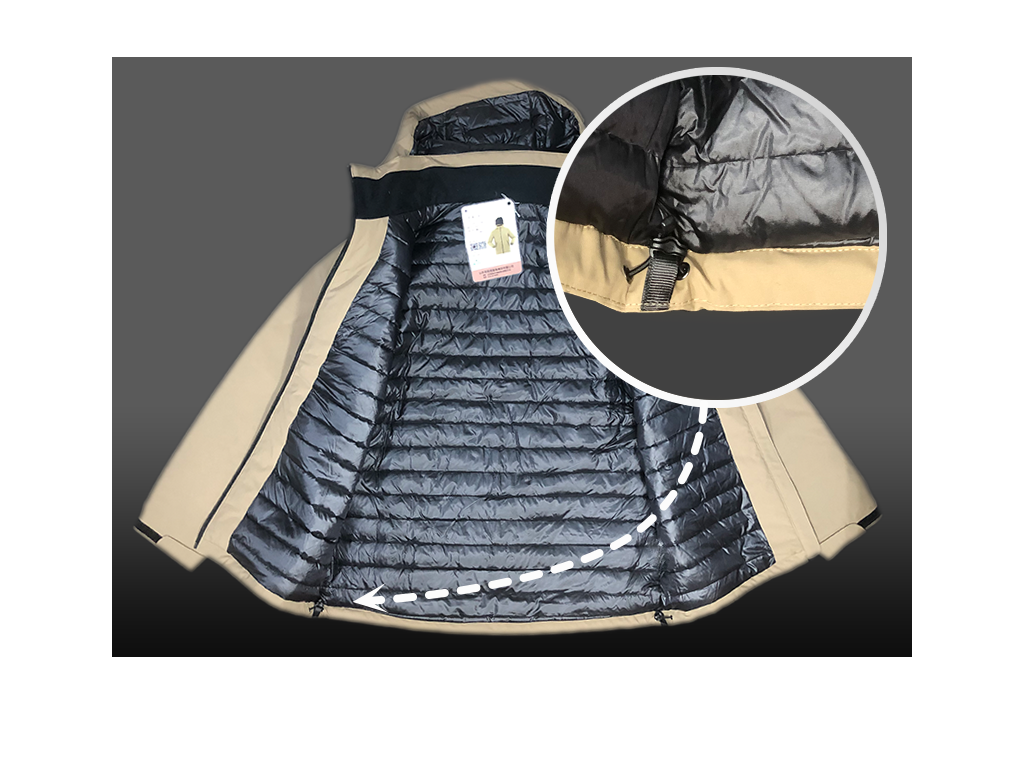
Precautions
1. avoid hot pressing
After hot pressing, the porous material cannot rebound, which would influence the performance in thermal insulation.
2、Splicing in big piece
Avoid dense quilting because pinholes might bring more air ventilation and furthermore affect the performance in thermal insulation.
3、Windproof design
Since Y-Warm is light and thin, windproof design in sleeves and hem is recommended to minimize thermal exchange.

Bias cut & Elasticity
Bias cut can make Y-Warm more elastic.
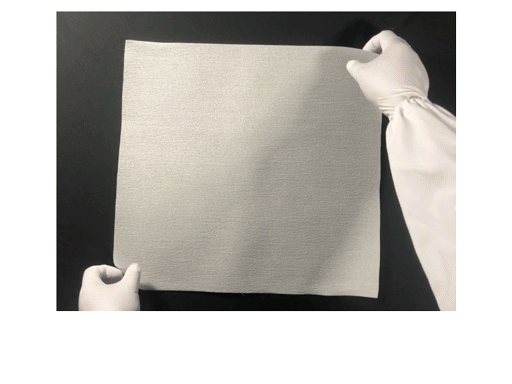
The relationship between layers and warm-keeping
More layers, better insulation performance.
The layers filled in sleeves is recommended less than in body except for extreme cold application.

Different experience
Common feedback of clothing filled only with Y-Warm is warm, light, thin and special.
Garment filled with two layers of Y-Warm meets warm-keeping requirement of consumers in the environment around 0 °C.

Verification of warm-keeping
Insulation material is firstly applied in clothing. Due to its unique thermal insulation principle compared to conventional materials, even with advanced thermal manikin test thermal insulation of Y-Warm material cannot be effectively evaluated.
In artificial climate lab and under the set ambient temperature, orthogonal experiment is performed and the temperature change inside the tester's clothing is recorded. Comparison of the recorded curve data of each group and the actual wearing experience can be effectively verify thermal insulation performance.
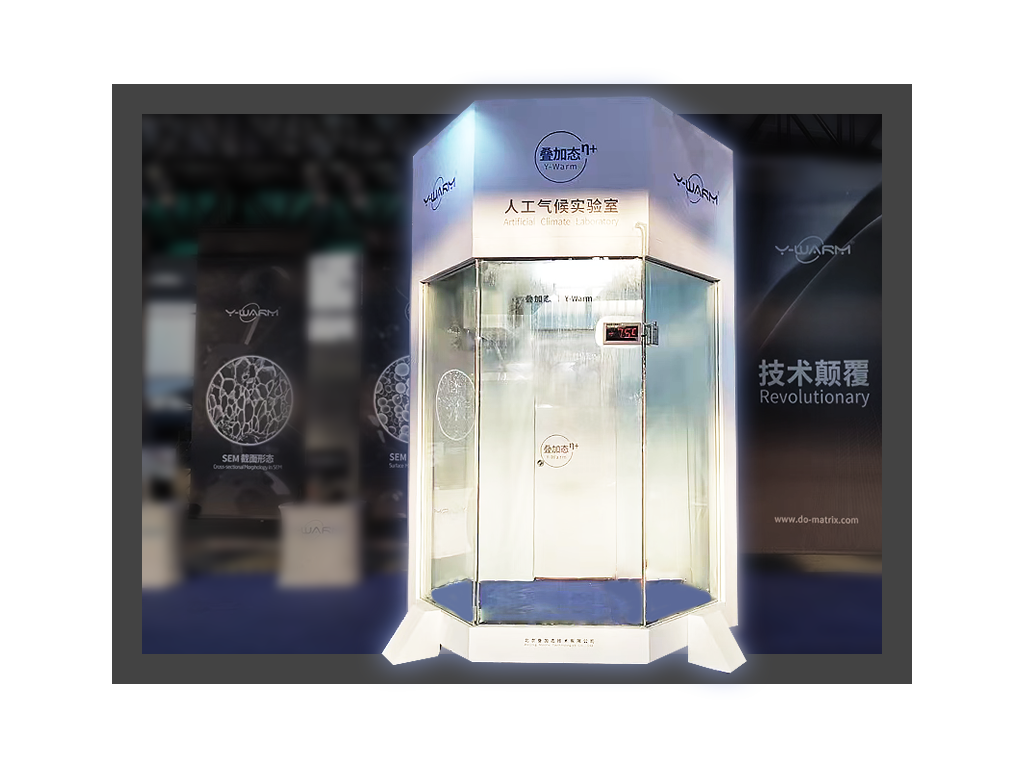
Value of Science
Fundamental science is the "vernier ruler" of technological progress, allowing us to measure the depth, breadth and extension of technology.
Conduction, convection and radiation are the fundamental scientific principles for warm-keeping of clothes.
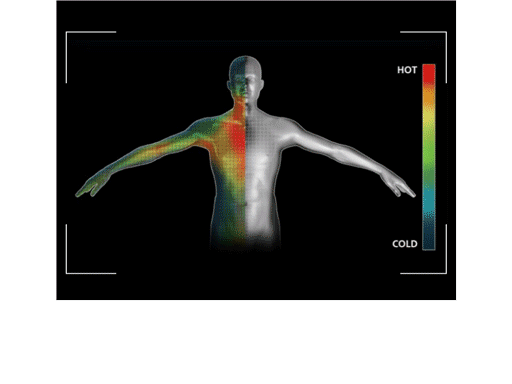
Conduction
The higher temperature difference between inside and outside of garment, the faster heat conduction and the more heat loss.
Therefore, reducing the thermal conductivity of outer garment, improving the air stillness of the insulation layer, and slowing down the heat loss are the best solutions to keep warm.
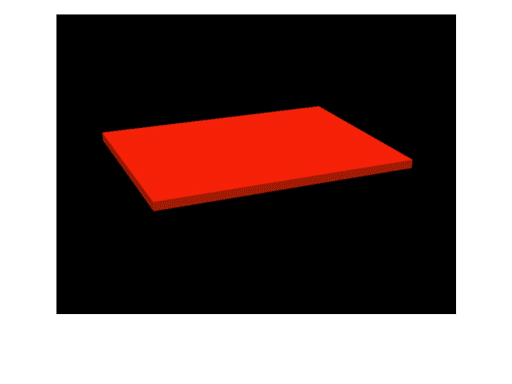
Convection
The more intensive air convection with the cold air, the lower thermal insulation performance, which is a critical technical point in winter clothing.
Windproof design of apparel fabric and design of the garment structure can effectively reduce air convection.

Radiation
Radiation is a channel of heat loss from the human body, and the best solution is reflection.
But the premise is that the reflective material needs a lower thermal conductivity, otherwise heat conduction is greater than heat reflection, in the end it rather accelerates heat loss.
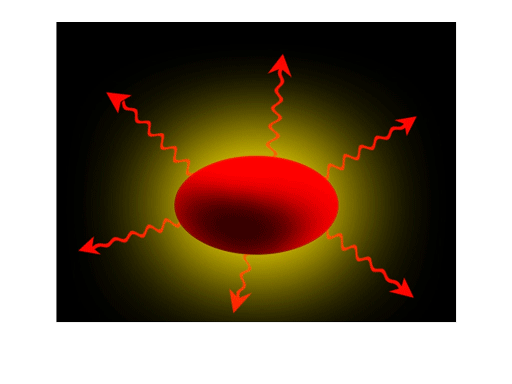
Tag
Mark the clothing with “Technic”; realize the dream through “Innovation”
Tag size is 75mm*118mm, and made by special paper & double-sided silver stamping process.
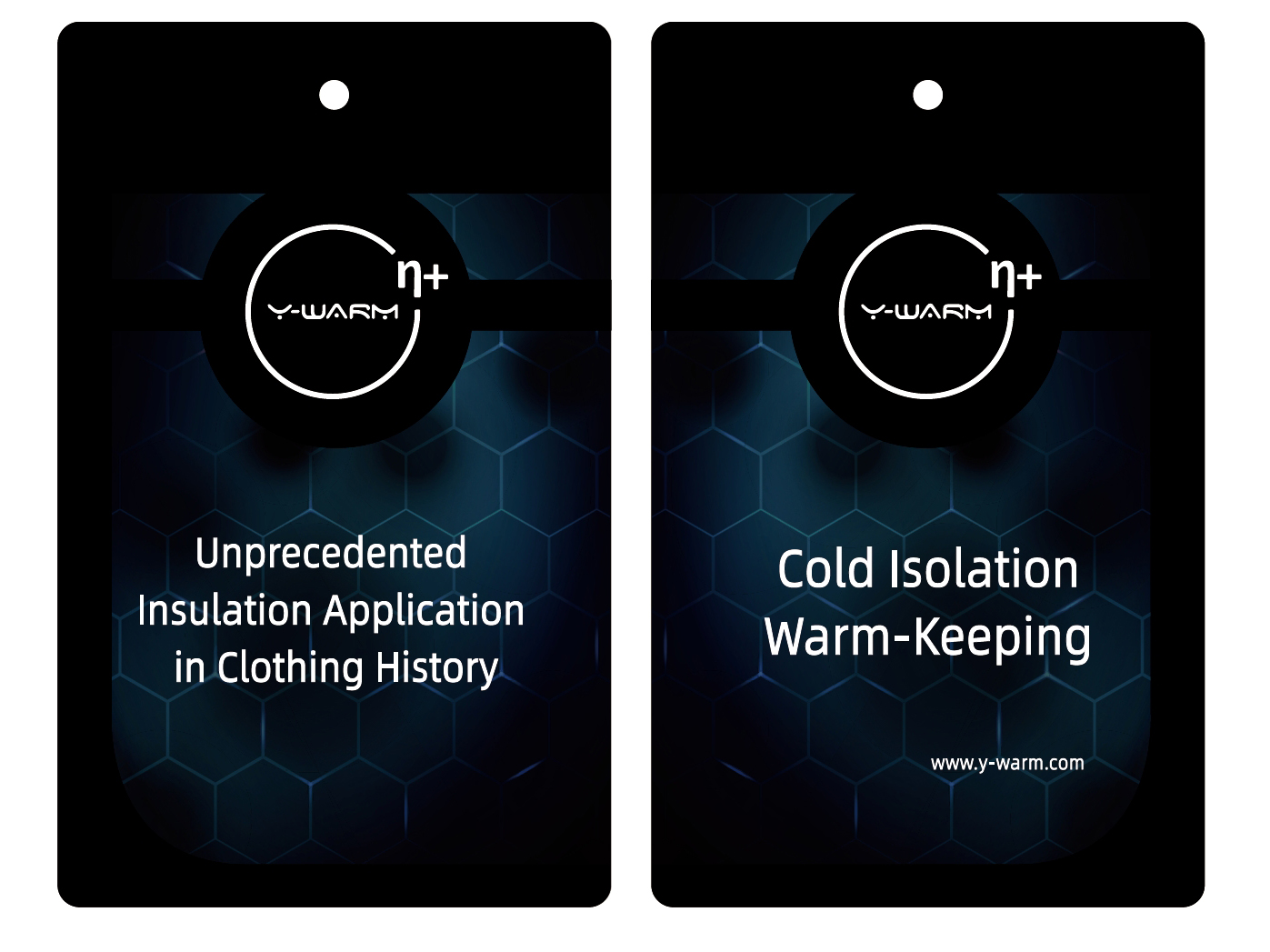
Sample package
Perceive the temperature of Technology. Let innovation make its own voice
It is made by TPU material with soft handle.
Diagonal specification: 85mm*92mm.
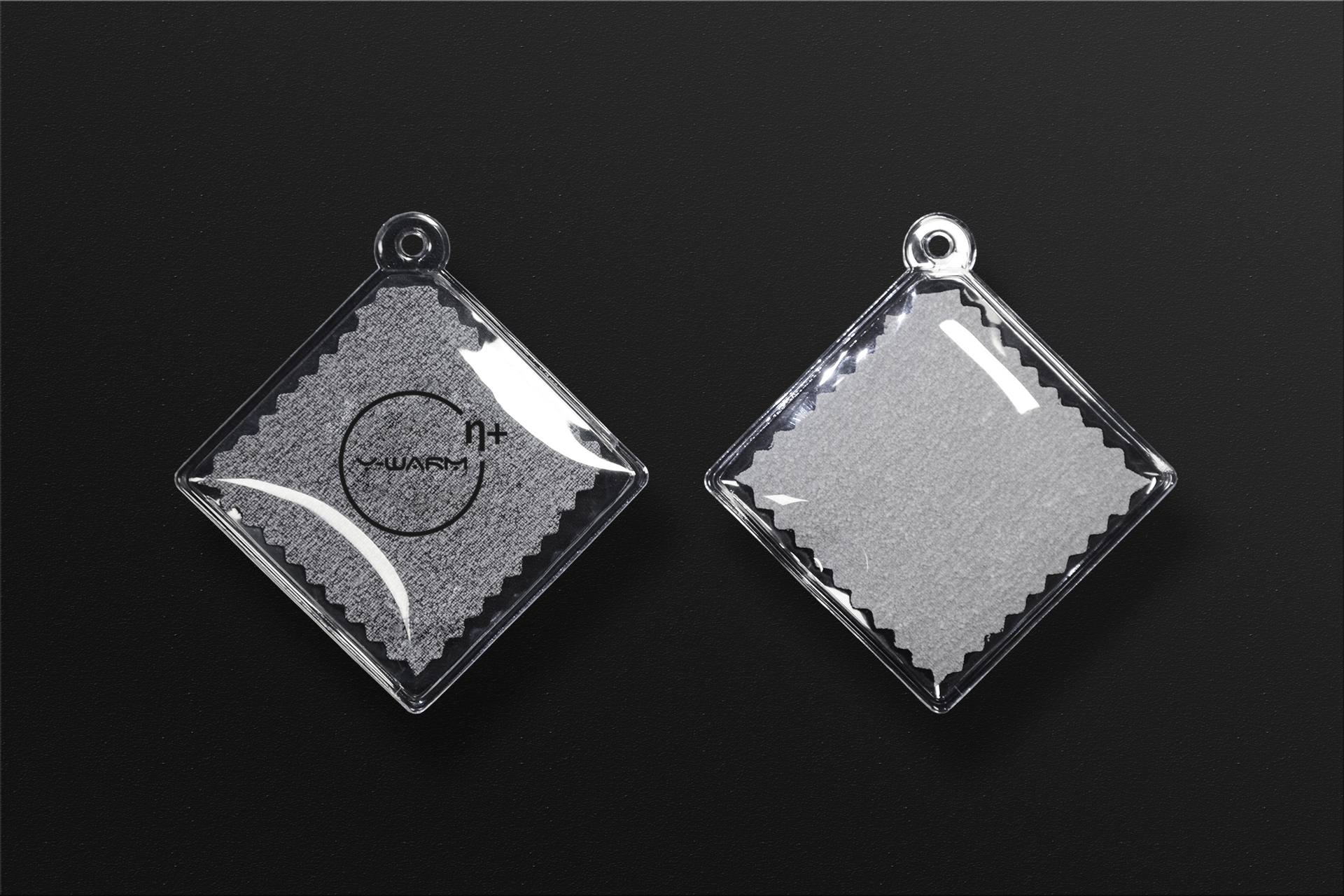
Opportunity & Risk
Opportunity and risk coexist in new inventions.
For the emergence of a new material, its performance and function and its safety and environmental standards are recommended to be evaluated.
If the above conditions could be met, a new material means a new opportunity.
Pioneers never follow others. Originality can go beyond!



